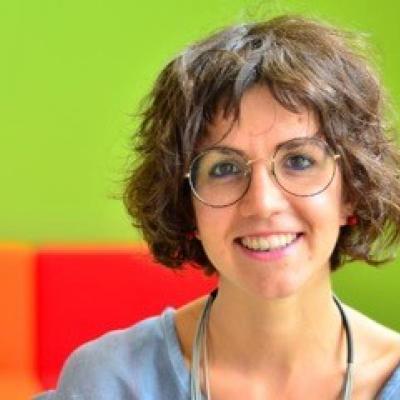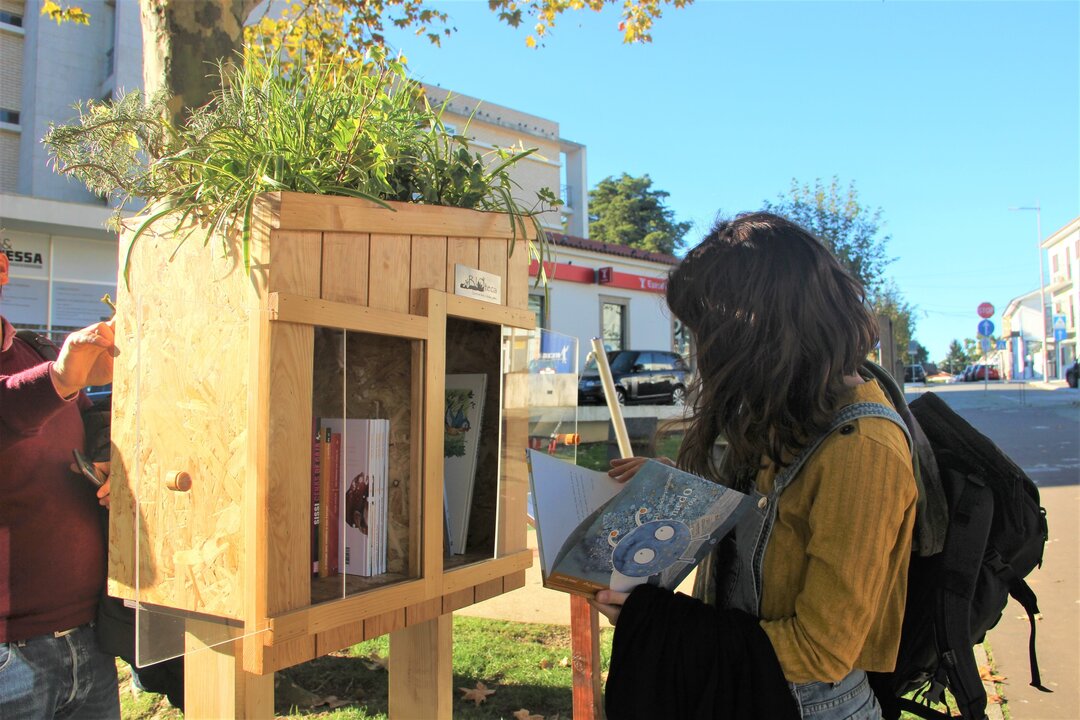BiodiverCities: new video and interview
We hope you will find interesting and informative the BiodiverCities video, showcasing insights and learnings from the cities of Novi Sad, Palma, Valongo and Vilnius, through the testimonies of the experts involved: https://audiovisual.ec.europa.eu/en/video/I-244194.
You can find more information on BiodiverCities here, https://cop-demos.jrc.ec.europa.eu/citizen-engagement-projects/biodivercities and access/download the BiodiverCities Atlas. A participatory guide to building urban biodiverse futures.
And now, let’s move to the conversation with Ms. Medea Ferrigno, now PhD candidate at IUAV, Venice.
We are happy and grateful to report part of an interview held with her, in her capacity of expert for the town of Regalbuto (Italy), within the BiodiverCities project. Her words were due to be part of the BiodiverCities video, but for technical reasons, we could not include them. However, we think these words are important to share.
In dialogo con Medea Ferrigno sul senso della partecipazione pubblica e l’esperienza di Regalbuto nel progetto BiodiverCities e oltre.
A conversation with Medea Ferrigno on the meaning of engaging citizens and Regalbuto’s experience within BiodiverCities and beyond.
Che cosa significa coinvolgere i cittadini? / What does it mean to engage citizens?
“Per me coinvolgere i cittadini vuol dire far incontrare, mettere in relazione diversi valori. Vuol dire animare un processo co-produttivo che tenta di mettere insieme diverse visioni del mondo, diversi modi di guardare al futuro di un territorio con l’obiettivo chiaro, comune e condiviso di migliorare la qualità della vita e il benessere di tutti”.
“From my point of view, engaging citizens is about bringing together and connecting different values. It means enabling a co-production process that seeks to bring together different visions of the world, different ways of looking at the future of a territory, with a clear, shared aim of improving the quality of life and well-being of all”.
Che cosa significa ‘biodiversità’ nel tuo contesto territorial? / What does biodiversity mean in your territorial setting?
“Nella mia città, Regalbuto, biodiversità vuol dire innanzitutto guardare alle fragilità di questo territorio. Regalbuto è uno di quei comuni che vengono definiti come “aree interne”, ovvero comune distante dai principali centri metropolitani, comuni i cui residenti hanno difficoltà di accesso ai principali diritti di cittadinanza (Istruzione, Salute e Mobilità) che si trovano in una situazione di sottosviluppo. Sono luoghi dai quali i giovani vanno via in cerca di migliori opportunità per il loro futuro e la popolazione continua a diminuire (negli ultimi 10 anni a Regalbuto si è verificato un decremento della popolazione residente di circa il 10%). Tutelare la biodiversità di questi territori vuol dire, innanzitutto, tutelarne la sopravvivenza; vuol dire immaginare un nuovo modo di abitare questi luoghi ridefinendo una nuova relazione armonica tra uomo e natura; vuol dire guardare al futuro di questi luoghi in maniera differente da quanto fatto nel recente passato, provando a far dialogare la tradizione con il bisogno di innovazione cercando di creare le condizioni affinché i giovani possano decidere di rimanere a vivere in queste aree, oggi sempre più marginalizzate”.
“In my city, Regalbuto, biodiversity means, first and foremost, looking at the fragility of this area. Regalbuto is one of those municipalities defined as ‘inner areas’, that is to say a municipality far from the main metropolitan centres, with residents facing challenges exercising citizenship rights (education, health and mobility). These are the places young people leave to look for better opportunities for their future, and so the population continues to decline (Regalbuto has seen a decrease of around 10 % in the last 10 years). Protecting the biodiversity of these areas means, above all, protecting their survival; to imagine a new way of living in these places by reshaping a new, more “harmonious” relationship between humans and nature; it means looking at the future of these places differently from what has been done in the recent past, by trying to engage tradition while being open to innovation, by seeking to create the conditions for young people to want to and be able to stay in these increasingly marginalised areas”.
Perché è importante includere i cittadini nella pianificazione urbana e elaborazione di politiche pubbliche? Perché è risultato importante coinvolgerli a supporto della biodiversità nel tuo contesto?/ Why is it important to include citizens in city planning and policymaking? And why was it important to engage citizens in support of biodiversity in your context?
“Io credo che includere i cittadini nei processi di pianificazione e, più in generale nei processi di policy making, oggi sia fondamentale più che mai. Viviamo in un’epoca in cui le disuguaglianze sociali e territoriali continuano a crescere come conseguenza di processi che in passato hanno, di fatto, concentrato il potere nelle mani di pochi. Sono fermamente convinta che mettere in atto processi partecipativi che siano realmente inclusivi possa permettere di redistribuire potere tra i cittadini. Pianificare il futuro dei nostri territori non è soltanto una questione tecnica ma è fondamentale che la politica dia un mandato chiaro di apertura reale dei processi decisionali alle fasce marginalizzate della popolazione che, per troppo tempo, hanno subito scelte scellerate”.
“I believe that including citizens in planning processes and, more generally in policy making processes, is now more crucial than ever. We live in a time when social and territorial inequalities continue to grow as a result of processes that in the past have - in fact - concentrated power in the hands of a few. I firmly believe that putting in place participatory processes that are truly inclusive can allow power to be redistributed among citizens. Planning the future of our territories is not only a technical issue, it is crucial that policy gives a clear mandate for real openness of decision-making processes to marginalised parts of the population, who have, for too long, suffered from very bad choices”.
Tre cose che tutti devono tenere a mente circa il coinvolgimento dei cittadini in supporto alla biodiversità/Tell us three things everybody needs to know about engaging citizens in support of urban biodiversity
“Credo che chiunque voglia intraprendere un percorso di inclusione della cittadinanza per la tutela della biodiversità debba sapere che, innanzitutto, servono buone capacità nella gestione creativa dei conflitti, bisogna riuscire a farsi mediatore/mediatrice fra diverse posizioni e punti di vista e, a partire da questi, costruire un percorso inclusivo che permetta a diverse visioni del mondo di confluire in un obiettivo comune che permetta di migliorare la qualità della vita delle persone non solo delle persone che prendono parte al processo ma della collettività ampia, con particolare attenzione alle fasce svantaggiate.
La seconda cosa è quella di riuscire ad essere dei bravi bricoleurs, ossia riuscire ad essere creativi nel design di un processo partecipativo inclusivo, farsi strada tra le difficoltà burocratiche, le difficoltà di reperimento di risorse, tra le procedure già standardizzate e la definizione di nuovi strumenti. Serve, quindi, riuscire a tracciare, passo dopo passo, una strada nuova che metta insieme diversi pezzi facendo confluire diverse storie e diverse pratiche in un percorso comune.
L’ultimo elemento è avere sin da subito la consapevolezza che un processo di policy making che apra il processo decisionale alla cittadinanza ampia, con particolare riguardo alle fasce marginalizzate della popolazione, è, innanzitutto, un modo di agire politico. Oggi più che mai credo che non bisogna avere timore di dirlo perché animare un processo che si apre alla diversità e riesce ad includere diversi valori e diverse visioni del mondo, è innanzitutto un modo di agire politico nei nostri territori”.
“I believe that anyone wishing to embark on a path of including citizens in order to protect biodiversity must know that, above all, good skills are needed for the creative management of conflicts. It is necessary to be able to mediate between different positions and points of view and, on the basis of these, to build an inclusive pathway that enables different visions of the world to come together with a common goal that will improve the quality of life of people - not only of those taking part in the process but of the wider community, with particular attention to disadvantaged groups.
The second thing is to succeed in being good bricoleurs, i.e. being creative in the design of an inclusive participatory process, being able to deal with bureaucratic obstacles, difficulties in finding resources, finding a way between already standardised procedures and the development of new tools. We, therefore, need to be able to trace, step by step, a new road that brings together different stories and practices into a common path.
The last element is to be aware from the outset that a policy making process that opens decision-making to citizens, with particular regard to marginalised sections of the population, is first and foremost a political way of acting. Today, more than ever, I believe that we must not be afraid to say this because enabling a process that opens up to diversity and embraces different values and visions of the world is, first and foremost, a way of acting politically in our territories”.
BiodiverCities was a pilot project funded by the EU at the request of the European Parliament, run by the Joint Research Centre in collaboration with Directorate-General for Environment of the European Commission. It is part of the portfolio of projects of the Commission’s Competence Centre on Participatory and Deliberative Democracy. More information is available here: https://knowledge4policy.ec.europa.eu/projects-activities/biodivercities-project_en
So far, we have presented BiodiverCities in different venues, such as at the 6th International Conference on Public Policy (ICPP6, Toronto), at the 2023 European Week of Regions and Cities and in a seminar series, BiodiversiTalks, organised by the Politecnico di Milano (forthcoming), touching upon various aspects urban biodiversity and its governance. We would be very happy to continue to present this work in other venues and to different audiences, including policymakers, practitioners and researchers. If you see any opportunities in this sense, please reach out to us. Also, if interested in receiving a printed copy of the BiodiverCities Atlas, please write us an email at EU-CITIZEN-ENGAGEMENT@ec.europa.eu.

